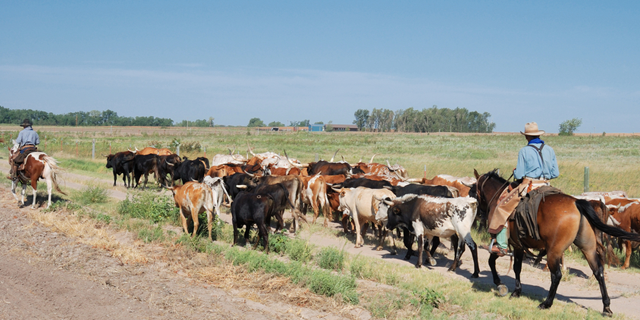We eat history every time we sit down at the table. As we tuck into that sizzling platter of fajitas or dig in to a succulent estofado de res, we’re enjoying food heritage as given to us by our ancestors. And one of the most significant contributions to Latin American food and culture is that of Africans brought to Latin America as slaves. Here, in honor of Black History Month, is the story of America’s first cowboys and the many-pronged African influence on Latin culture and cuisine.
Even though most of us believe that Spanish conquistadores were looking for gold, silver and spices, one of their first enterprises was actually to set up cattle operations. Before the days of plastic, almost all consumer goods were made with animal products such as rawhide, leather, and bone. Buttons, combs, shoes, gloves, clothing, saddles, and upholstery were all high-end consumer goods, and tiny, cramped, highly taxed Europe didn’t have the space to profitably raise all of the cattle needed to meet the demand. Alas, wide open Latin America gave cattle unlimited opportunities to reproduce and eat for free.
There was just one problem: cattle were nonexistent in the Americas. So they were dutifully brought by ship to the New World during Columbus’ second voyage. Canvas slings were hung from the tall masts of the ships and fastened around the belly of a cow, where it would dangle and sway throughout the voyage. The sling prevented the cow from breaking its leg or worse, toppling overboard.
Missionary priests then became the first ranchers charged with turning a profit on the huge swathes of property they had claimed for the Spanish crown. To do so, local indigenous tribesman were conscripted to be cowboys, but as they had never seen cattle before, they had trouble managing the beasts.
There was also a bigger problem: they had never been exposed to smallpox and died by the thousands when the Spanish accidently introduced the disease to the continent. What’s more, Queen Isabella, Columbus’ key financial backer, was not pleased about the enslavement of tribesmen, whom she considered to be free subjects of the Spanish crown. With no labor force available, slaves from Africa were imported to do the work.
Next, cattle transforms the Americas…
[pagebreak]Cattle have been part of African culture since biblical times. Slaves brought from Africa were not only excellent cattlemen, they were resistant to smallpox, as they’d already been exposed to cowpox (contracted by touching the udder of an infected milking cow and completely survivable). Able (and forced) to live and work among cattle, African slaves in Latin America were the first cowboys on the American continent.
Once the cattle herds were established, the cattle started to change the terrain and ecosystem. A plant species eaten at one spot could end up “deposited” in another spot 2-3 miles away by evening. The African cowboy drove his herd wherever there was more forage, replanting the trail along the way. Cactus, trees, and native grasses all increased their territory of existence.
But investors in the New World wanted a diverse portfolio. Other African slaves were assigned the task of planting crops. Sugar was a huge cash crop, which Europe did not have the climate to grow. Current day Puerto Rico, Cuba, Haiti were all dedicated sugar plantations. Other crops such as tobacco, citrus, corn, sorghum, and cotton were all planted and grown by African slaves. Many of the byproducts of these crops were also used as fodder for cattle and livestock, further supporting the mission of Latin American settlers of establishing a profitable cattle industry.
In time, as slaves were freed and married with either European immigrants or indigenous tribes people, the Africans were no longer a separate people in Latin America, but became part of the new singular culture formed by these combined groups. But the specific contribution of the enslaved, displaced Africans should not be forgotten, or underestimated.
It’s hard to imagine Cuba without puros made of the finest tobacco, Colombia without corn flour arepas, Peru without Pima cotton, or Puerto Rico without rum, which are all products of European investment paired with African labor. But cattle production and the Africans that tended the herds are the unsung creators of the landscape, the culture, and cuisine of the Americas.


![Making Mealtime Matter with La Familia: Easy Sofrito [Video]](https://thelatinkitchen.com/wp-content/uploads/2015/10/sofrito-shutterstock__0-500x383.jpg)
![Easy Latin Smoothies: Goji Berry Smoothie [Video]](https://thelatinkitchen.com/wp-content/uploads/2015/12/goji_berry-shutterstock_-500x383.jpg)
















![Fun and Fast Recipes: Fiesta Cabbage Salad [Video]](https://thelatinkitchen.com/wp-content/uploads/2015/11/fiesta_cabbage_slaw-shutterstock_-500x383.jpg)









